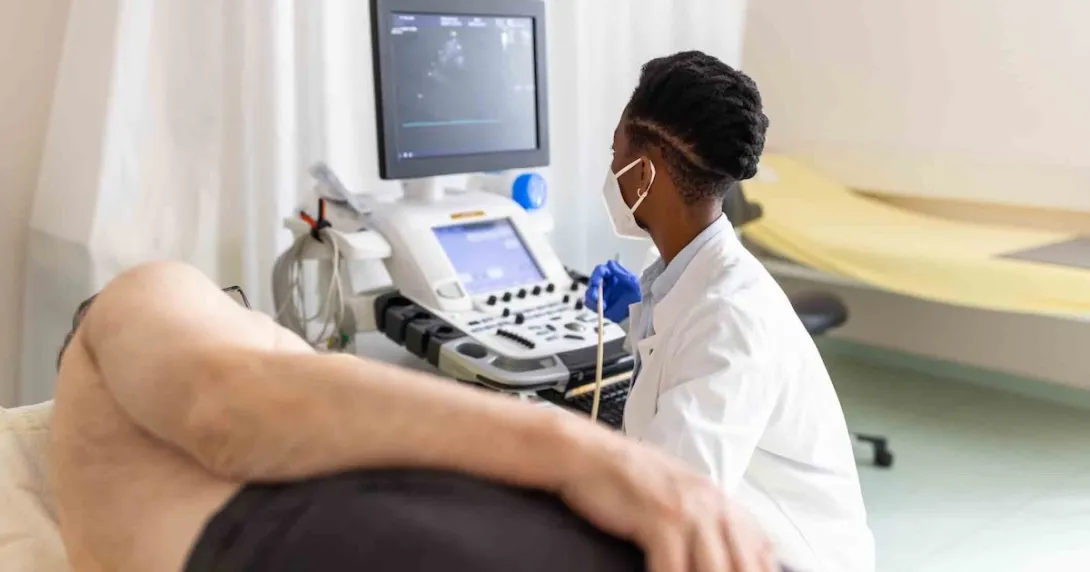
Luis Alvarez/Getty Images
Digital ultrasound company Butterfly Network announced it achieved certification for ISO 27001, a standard for information security management systems, published by the International Organization for Standardization in partnership with the International Electrotechnical Commission.
Butterfly has also completed certification for SOC-2 Type 2, C5 Germany (cloud computing compliance criteria catalogue) and The National Health Service Data Security and Protection Toolkit (DSPT), an online self-assessment tool that enables organizations to measure and publish their performance against the National Data Guardian's 10 data security standards.
The company's handheld, semiconductor-based ultrasound devices are used in a variety of specialties, including anesthesiology, cardiology and emergency medicines, as well as for veterinary imaging.
The Butterfly iQ+ is powered by the company's second-generation, ultrasound-on-chip semiconductor technology. The iQ+ system connects to the company's iOS or Android app.
According to Butterfly, the iQ+ Bladder can get automated bladder volume calculations with 3D visualizations in seconds.
"Achieving ISO 27001 and additional international certifications reflects our uncompromising commitment to protecting data and earning the trust of hospitals, health systems and customers around the world," Mike Tiemeyer, chief information security officer of Butterfly Network, said in a statement.
"These certifications demonstrate that Butterfly meets rigorous, globally recognized standards and is a reliable partner for secure, enterprise-grade medical imaging. We have the added assurance of being assessed by A-LIGN, a leader in global security audit services, as our third-party assessment organization (3PAO)."
THE LARGER TREND
Earlier this month, Butterfly Network launched a gestational age AI tool in Malawi and Uganda.
The tool, which was made possible with support from the Gates Foundation and developed by the University of North Carolina, aims to improve maternal and fetal health via AI-aided point-of-care ultrasound.
In June, Butterfly Network reported a 9% increase in revenue in the second quarter of 2025, to $23.4 million, up from $21.5 million in the same period last year.
U.S. revenue was $17.2 million in Q2 2025, while international revenue increased 19% year-over-year to $6.2 million.
Gross profit for the second quarter was $14.9 million versus $12.6 million in the prior year period. Gross margin increased to 63.7% from 58.6% in the prior year period.
The company attributed the increase to higher average selling prices and higher software and other services margins due to a decrease in software amortization and lower hosting costs.
In addition, operating expenses were $31 million in Q2 2025, up 4% from $29.8 million in the prior year period.
Total operating expenses excluding stock-based compensation and other expenses, were $23.1 million, compared to $23.4 million in the prior year period.
Butterfly reported a net loss of $13.8 million, compared to $15.7 million in Q2 2024.
Q2 2025 adjusted earnings before interest, taxes, depreciation and amortization (EBITDA) was $6.2 million, compared to $8.1 million in the same period last year.
The company is slated to report its third quarter 2025 financial results on Oct. 31.
Last year, Butterfly Network achieved EU MDR certification for its Butterfly IQ+ ultrasound system, which enabled the company to release its offerings into the European market, including its AI-enabled software Auto B-line Counter and Pulsed-Wave Doppler.
Auto B-line Counter uses AI to help providers determine patient abnormalities by measuring B-lines. B-lines appear as bright lines on an ultrasound and are associated with conditions such as chronic obstructive pulmonary disease.
Pulsed-Wave Doppler, which received FDA clearance in 2023, is a mode that providers can use to graphically display blood flow velocity measurements over a set span of time.


